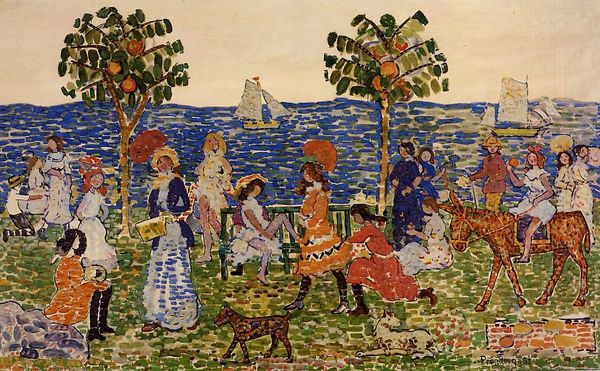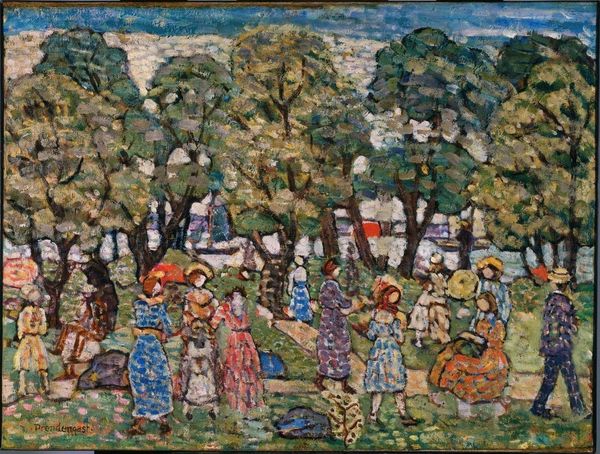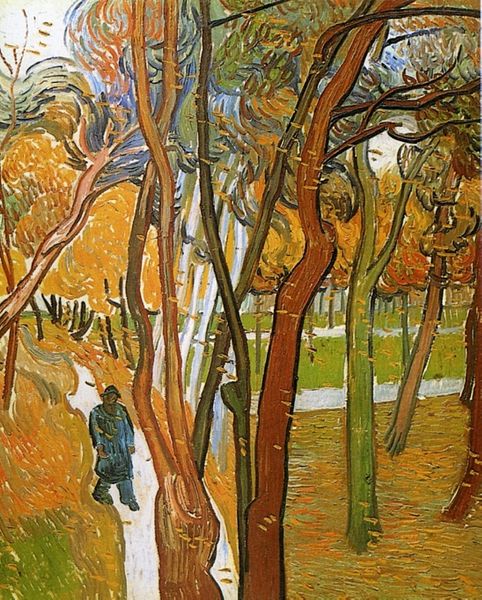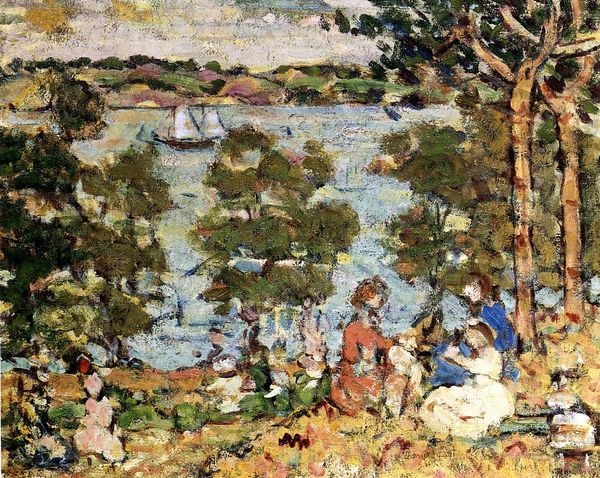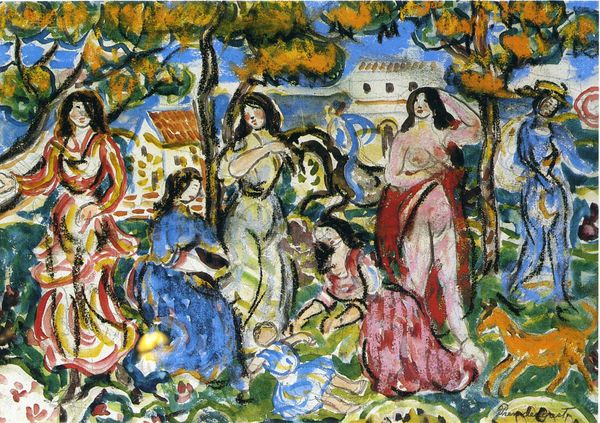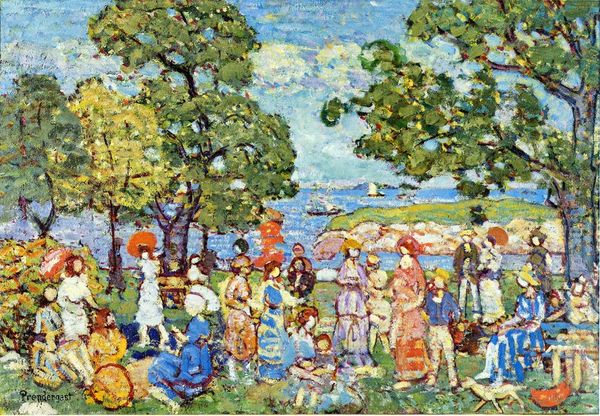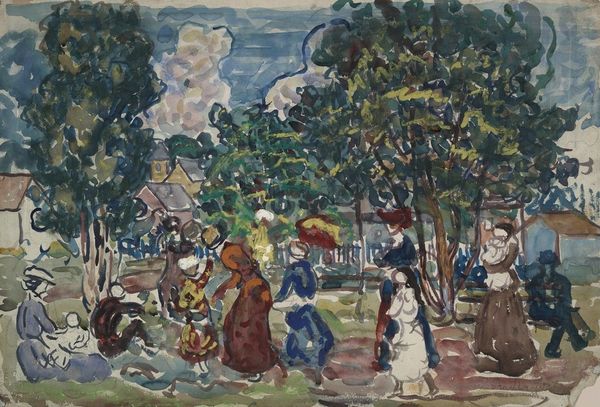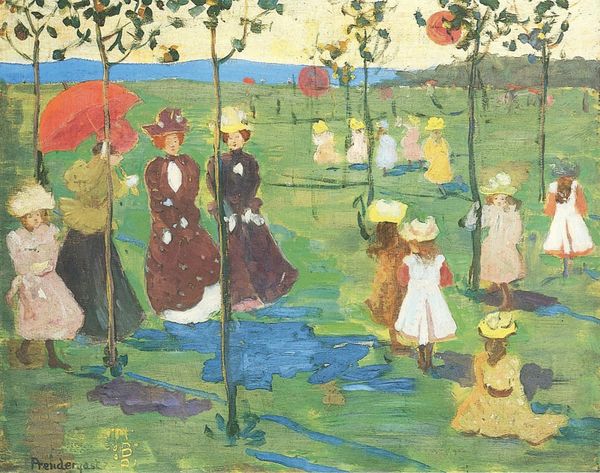
#
tree
#
abstract painting
#
impressionist landscape
#
possibly oil pastel
#
handmade artwork painting
#
oil painting
#
fluid art
#
acrylic on canvas
#
plant
#
naive art
#
painting art
#
chaotic composition
Dimensions: 195.58 x 270.51 cm
Copyright: Public domain
Curator: So, we’re looking at Maurice Prendergast’s "Picnic," created in 1915. It looks like it might be oil on canvas. Editor: It’s such a vibrant scene! The figures almost blend into the landscape with the similar brushstrokes. What do you make of it? Curator: The brushstrokes are key, aren’t they? Think about how Prendergast is using the materiality of the paint itself. The visible, almost mosaic-like strokes flatten the image, defying traditional notions of depth and perspective. We’re not looking *through* the painting to a realistic scene; we are very much aware of the *surface* and how it was made. Editor: So, it’s drawing attention to the process of painting rather than just depicting a scene? Curator: Exactly. Consider the social context too. Leisure activities like picnics became more common with industrialization and the rise of a middle class with disposable income. Prendergast isn't just showing us a picnic; he is showing us a manifestation of societal changes related to production and consumption. He's turning leisure into a commodity represented by the labor of his hand and the consumption of materials. Editor: That’s fascinating. I hadn’t thought about it that way. It seems that this Impressionist painting reveals social structures just through brushwork and chosen materials. Curator: Indeed. And think about how the work challenges the high/low art dichotomy. He elevates a scene of leisure but makes no attempt at academic polish. Instead, his handiwork remains prominent, almost "craft-like" in its construction. It causes us to examine the making of this type of ‘high’ art. Editor: So, the focus on materiality gives insight into the society and the artist’s intention. Thank you! Curator: Absolutely. Seeing the material reality helps unveil hidden complexities. It enriches how we engage with the piece, and the historical contexts within which is it framed.
Comments
No comments
Be the first to comment and join the conversation on the ultimate creative platform.

